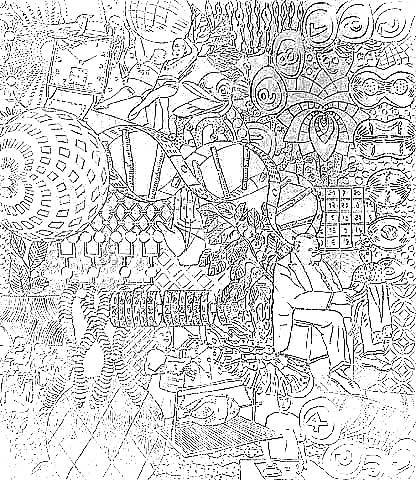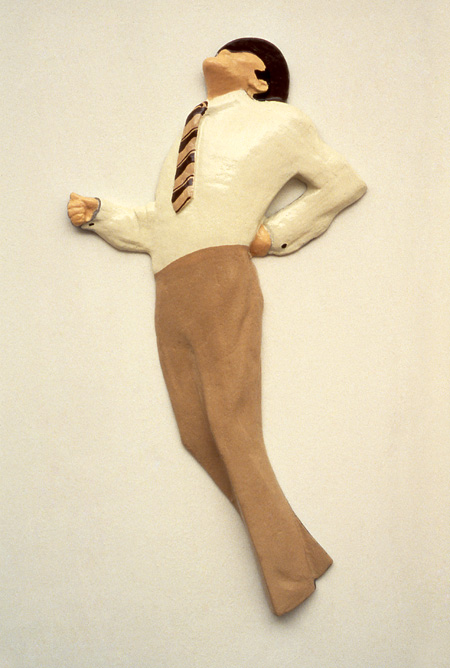
As discussed in the previous posts, artist Philip Smith was excluded from the Metropolitan Museum of Art's "Pictures Generation" show even though he was one of a handful of artists in the original 1977 "Pictures" show curated by Douglas Crimp. Many people are upset by this but almost no one is taking the opportunity to talk about what the exclusion means in terms of defining what a "Pictures artist" is. Above, a Philip Smith in his typical style (the image of a subtly layered, predominately red painting has been brutally inverted and made grisaille to emphasize the drawing). Imagery such as this is anathema to what we think of as the "cool," mass media-conscious style of Sherrie Levine, Richard Prince, et al. Elements that might be considered corny, trite or unhip, in combination or not: DNA, quacking duck, acrobats, palmistry hand, bird, clock, cell mitosis.

Above, a Robert Longo enamel on cast aluminum work in the Met's "Pictures Generation" show. The image may also seem corny or trite, almost folksy in execution, but the hipness of the source is impeccable: a still from a Fassbinder movie reproduced in the Village Voice. Also, the single "iconic" image syncs more readily with the Pop ethos (which the Pictures artists are essentially a continuation of), as opposed to the allover, AbExpressive roots of Smith's cornucopia of imagery.
